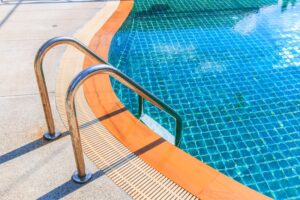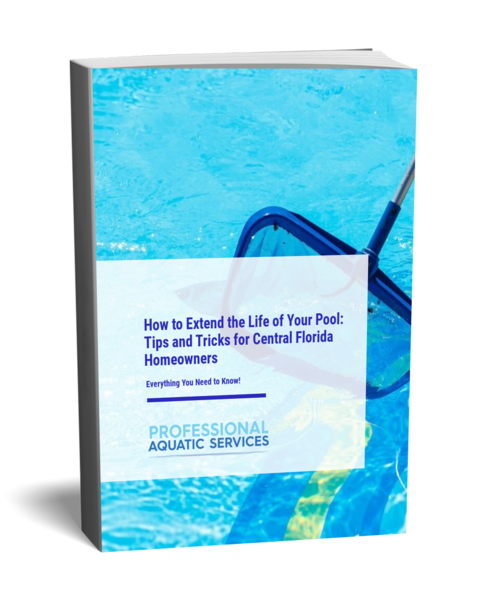Is your home’s pool starting to show its age, leaving you uncertain if replastering or a full pool resurface is the better investment?
Aging pools often lead homeowners into a cycle of escalating costs, from frequent maintenance to unexpected repairs, quietly draining your budget. While replastering might initially seem more affordable, its shorter lifespan can quickly add up to ongoing expenses and repetitive upkeep. A pool resurface, on the other hand, often provides a more durable, visually appealing, and financially sensible long-term solution.
By comparing upfront costs, lifespan, and maintenance demands, you’ll gain clarity on which choice delivers the most value. This straightforward comparison ensures that you’ll confidently choose the best option to rejuvenate your pool and protect your home’s value for years to come.
What’s the Real Difference Between Replastering and Resurfacing a Pool?
If you’re considering updating your swimming pool, you’ll first need to know what sets replastering apart from a full pool resurface. Replastering your pool means applying a new layer of traditional white plaster directly over the existing plaster. It’s a straightforward option, often cheaper upfront, but typically lasts around 7–10 years. However, plaster can be prone to stains, rough textures, and minor cracks, requiring frequent pool repair and maintenance.
In contrast, when you choose to resurface a pool, you have several modern options. Materials such as pebbles, quartz, exposed aggregate finishes, or glass beads offer more durable and visually appealing alternatives to basic plaster. These resurfacing materials provide increased longevity, often exceeding 15 years, and reduce maintenance costs, pool chemical usage, and associated costs over time. While the total cost to resurface may initially seem higher per square foot, the lower ongoing expenses and improved property value typically outweigh the lower initial investment of replastering.
Upfront Costs: Replastering vs. Pool Resurface
Understanding upfront costs helps you choose wisely between replastering and pool resurfacing. Below are current national averages to guide you:
A standard replaster project—applying white plaster—typically costs $4–$8 per square foot, or $2,500–$8,000 for a 14×28–16×32 ft residential concrete pool
For pool resurface using aggregate finishes like quartz or pebble (including well-known brands such as Pebble Tec), expect $5–$10+/sq ft, totaling $3,500–$15,000+ .
Surface Type | Cost per Sq. Ft. | Avg. Residential Total (14×28–16×32 ft) |
White Plaster | $4–$8 | $2,500–$8,000 |
Quartz/Aggregate | $5–$10+ | $3,500–$15,000+ |
Pebble (e.g., Pebble Tec) | $10–$20 | $4,000–$16,000+ |
Labor and prep—such as draining, acid wash, and minor repairs—are included in these averages. Costs vary depending on factors like your pool size, existing surface, and needed repairs.
Next, we’ll explore how lifespan and maintenance play into the real cost over time.
Durability, Lifespan, & Maintenance: Comparing Long-Term Costs
Beyond upfront expenses, the durability of your pool’s surface directly impacts long-term costs. Standard pool plaster typically lasts around 8–12 years before issues like rust stains or cracks appear, increasing your ongoing pool maintenance expenses. On the other hand, choosing a pool resurface with quartz, pebble, or aggregate finishes gives your pool surface better resistance to wear and tear, lasting 15–20+ years.
Here’s a clear breakdown comparing plaster versus resurfacing:
Factor | Plaster Finish | Resurfacing (Quartz/Pebble) |
Average Lifespan | 8–12 years | 15–20+ years |
Repair Frequency | Frequent (every 2–3 years) | Rare (every 5–7+ years) |
Maintenance Costs | Higher chemical usage | Lower chemical usage |
Surface Durability | Prone to staining & cracking | Resistant to most issues |
Long-Term Value | Moderate | Higher |
With pool resurfacing, you’ll save significantly on labor costs and chemicals. Your beautifully updated pool not only lasts longer but remains attractive, reducing hassle and expense over the years.
Value-Added Benefits: Where Does Your Investment Go Further?
When comparing pool replastering and a full resurface, consider how each affects your long-term investment. A complete pool resurface delivers better value by significantly enhancing durability. Modern resurfacing materials, such as quartz and pebble finishes, last longer and resist issues like staining and cracking. Your existing pool area also gets a more attractive look, boosting curb appeal and property value.
For commercial pools, an upgraded surface material strengthens branding efforts by creating a more welcoming environment. Additionally, resurfacing reduces water and chemical waste, cutting down your ongoing pool service costs.
When Is Replastering More Cost-Effective?
Still, there are times when replastering makes sense for your existing pool. If you’re budget-conscious and need immediate improvements, replastering requires fewer material costs upfront—often just a few thousand dollars. It’s also suitable for low-use residential pools or fiberglass pools, where extensive refinishing isn’t necessary. Lastly, if you’re planning major renovations soon, a replastering job might serve as a temporary fix, saving money until your larger resurfacing project is ready.
When Pool Resurfacing Is the Smarter Investment

While replastering suits temporary or lower-budget needs, pool resurfacing makes more sense if you’re thinking long-term. A complete pool resurface provides lasting value, especially for high-traffic locations like hotels, apartment complexes, or community pools. Concrete and fiberglass pools in busy areas wear faster, making resurfacing a smarter financial decision.
Although pool resurfacing costs seem higher initially, the longer lifespan significantly reduces your total expenses. Modern resurfacing materials, such as quartz and pebble finishes, minimize maintenance and eliminate the need for frequent touch-ups, including pool paint jobs. A fresh, durable new surface boosts your pool’s visual appeal, attracting more guests and enhancing property value.
For commercial and multi-family pools focused on impressing visitors while controlling ongoing maintenance, resurfacing offers practical, long-term benefits.
Final Verdict: Replaster or Pool Resurface?
If your primary concern is upfront cost, replastering is a more cost-effective option. However, if you’re considering overall value, choosing pool resurfacing is a better investment. Replastering’s short lifespan means more frequent repairs and added expenses over time, especially in busy pools.
On the other hand, resurfacing, though initially more expensive, provides durability and aesthetic appeal that increase long-term value. If you’re a property manager, hotel owner, designer, or contractor, pool resurfacing ensures fewer maintenance headaches, happier guests, and lower lifetime costs.
When you’re ready to upgrade your pool, trust experienced professionals like Professional Aquatic Services for reliable and attractive pool resurfacing and refinishing results.
Frequently Asked Questions
Pool resurfacing lasts about 15–20+ years, depending on the finish, while traditional plaster typically needs replacement every 8–12 years due to wear and cracking.
Pool resurfacing usually costs between $5 and $10+ per square foot, depending on the material. Pebble or quartz finishes typically fall into this range, with premium options costing more.
Yes, although pool resurfacing has a higher initial cost, it offers greater long-term value. Its increased durability significantly reduces maintenance expenses and provides better aesthetic appeal, enhancing property value.
Replastering is more cost-effective for budget-conscious homeowners or as a temporary solution. It’s ideal for low-use pools, fiberglass pools, or when major renovations are planned soon.
Aggregate finishes, such as pebble or quartz, typically require the least maintenance. They resist staining, algae growth, and cracking better than standard plaster, resulting in lower long-term upkeep costs.

